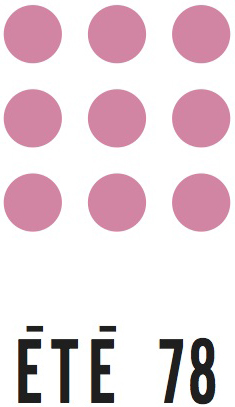with Louis-Cyprien Rials, Marcos Avila Forero, Paula Castro, Jenny Feal,
Charlotte Seidel, RohwaJeong, Kihoon Jeong, Yangachi, Afour Rhizome, Sun Choi
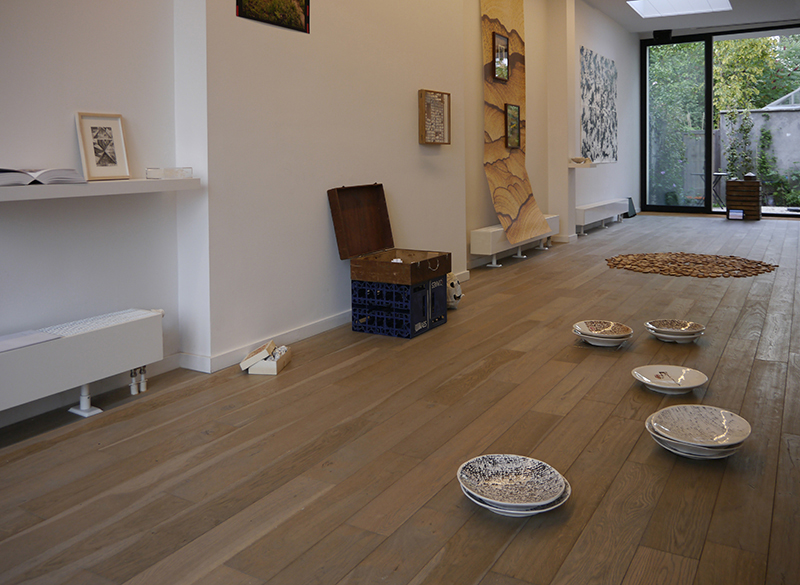
Opening on Saturday, September 15th 2018 at the contemporary art space ETE 78, Ixelles, Belgium
15.09 – 06.10.2018
_____________________
The title of the exhibition Le temps des pommes refers to the song The time of cherries *, written by Jean Baptiste Clement ( 1836 – 1903 ) in 1867. This song sings originally the summer, the beauty of the nature and the nostalgia for a lost time. It is then associated with the Paris Commune **, because of its author, who participated in.
“ Change the world, change the life for the happiness of all ”, such was the dream of the people who participated in. For the exhibition Le temps des pommes, the artists think over from past to present about the world and the social, political, economic, ideological history while having a visionary analysis.
Born in 1981 in Paris, Louis-Cyprien Rials attended theater lessons at the conservatory, in France, before discovering photography in Japan, where he lived for many years. He is the winner of the SAM PROJECTS 2017 Prize.
His work documents through photographs and videos a world devoid of humans. All that remains are the forms and terrains conducive to disorientation and contemplation. Through an exploration of the possible representations of landscapes from micrographics to satellite imagery, by changing the scale of these studies, he proposes to the viewer a space as free to the imagination as to pareidolia. In this universe of the retreated and forgotten being, this documentation of abandoned scenography, of monuments – natural or not – of ruins , traces recorded in geography, reveals a piece of humanity as seen through the prism of his absence.
Graduated in 2010, from the Ecole Nationale Supérieure des Beaux-Arts of Paris, Marcos Avila Forero (born in 1983, in Paris) is invited to the 57th Venice Biennal (2017) Viva Arte Viva by the curator Christine Macel.
The curator Daria de Beauvais, said : “ Videos, frescoes/murals, objects, sculptures, performances or installations, the work of Marco Avila Forero always seems to evoke an off-screen : a meeting, a story or a process it keeps track of. His micro-fictions made of bits and pieces seek to build up a colusion between times and places that seem at odds rather than demonstrate or document. The richness and poetry of this work come from the visit and the diversion of the boundaries… At times of increased and dematerialised flaws, Marcos Avila Forero broaches the duration and materiality of movings/shiftings and migrations, provides meaning and substance that are too often neglected… The human being is also central in his work. It is the one who paradoxically waits at the edges waiting forever “ the good moment ” to jump ahead/lead the way. ”
Jenny Feal is born in 1991 in Havana, Cuba, and obtained a Master from the Ecole Supérieure des Beaux-Arts de Lyon in 2016. The sale year, she won the Renaud prize for the installation Te imaginas.
For her, objects are part of our daily life and they testify not only a physical or functional trajectory, but also symbolic. Through her work, the artist takes existing objects with proper lives that belong to a specific context. Because of its reproduction or transformation, a distance and a feeling of strangeness are caused in the spectator’s experience. The thin line between personal and collective items is determined by the introduction of super cial and daily objects, loaded with symbolic, historical, social and political dimensions. Cuba is a reference and an endless source.
Sun Choi, born in 1973, lives in Seoul, South Korea. He graduated from the Hongik University in Séoul in 2003. He won the grand prize of the SongEun Award in 2013.
For Sun Choi “ the artist had vague questions about art. And he made efforts to make those vague questions more clear and tried to put those efforts into practice. Leaving behind the past irrationality of contemporary Korean art, which overlaps with his time, he found it difficult to figure out what on earth art is and what we can call artistic. In front of the vagueness created by Western-oriented conventional wisdom about art, the misery of reality that you and I can clearly witness is paradoxically artistic enough. There are two conflicting factors existing at the same time in his “work” that is presented as art: visible and invisible, material and immaterial, clear and unclear, and artistic and inartistic. He is creating artworks in hope that “ art ” will vanish.”
RohwaJeong, made by Yun-hee Noh (Seoul, 1981) and Hyeon-seok Jeong (Seoul, 1981), is an visual artist couple from Seoul, South Korea. More than a duo, it an unique and unsplitable being. Their work observes and pays attention to relations changing in various times and spaces, and makes efforts to capture them effectively in their works. In particular, they try to probe into diverse relations among individuals and the individuals’ detailed conflicts arising from their roles in the relations. This is a movement to get away from the majority’s subjective and violent eyes that interpret all phenomena around in somewhat lazy and stereotyped judgment. Accordingly, it sometimes appears to be a situation or state that may induce various interpretations of a certain relation through works. In 2019, the duo participates in the 12th Gwangju Biennale, Imagined Borders, in South Korea.
Paula Castro, born in Buenos Aires in 1978) lives and works in the same city. She approaches the drawing through landscapes and imaginary concepts compound of points and lines. Representation of the realm of imagination and mind, the world is regarded as a “ body ” of infinite points on which the surface is in movement in the time and space. Things found everywhere (photos, words, places) are the origin of her works. Forms and thoughts constantly change and are transformed into an organic whole of lines and points, ideas and concepts, imaginary and real places. Her drawings are the result of a visual modification or a mysterious meeting between literature and line.
Charlotte Seidel, born in 1981, in Hamburg, Germany lives and works in Paris. According to Isaline Vuille, this artist harvests a sensitive art of the invisible, of the absence and ephemeral, often taking place in situ, poetically to magnify details. Creating small intensities emerging from the continuous stream of events and images surrounding us, Charlotte Seidel uses the reality as material, a sometimes banal everyday life, common histories, isolating familiar elements to which we do not necessarily pay attention. Encouraging people to take a closer look on our environment, the practice of Charlotte Seidel made, piece by piece, something that could be called poetry of everyday life.
Kihoon Jeong was born in 1980, and he is currently living and working in Seoul, South Korea. The world of Kihoon Jeong’s artwork is about unique attitude/action which resists against huge system, standardized groups, unified culture and forced regulation. His work begins with the question that if we are not able to transform social structure and custom at the collective dimension, what would we do ? He goes counter to vanity, neglected things, irregular activity and the logic of market through attempting minute modification of microscopic units at a partial level and making a backward movement from the logic of power within social structure.
Yangachi was born in 1970 in Busan, South Korea and was graduated of a B.F.A in sculpture from the University of Suwon and a Master in media arts from the Yonsei University, in Seoul. He is interested in the screen, movie, surveillance. The artist accumulates episodes, collects information and transforms them into “ signs ” to edit them by sequence. He proceeds then in superimposing signs and puts them in a relationship of explanation. Yangachi spreads his reality and his experiences and reflects them in the contemporary Korean society to criticize it.
Afour Rhizome (or A4 Rhizome or A4rizm) is one of artist’s names chosen by Kyoo Seok Choi (born in Seoul, South Korea, in 1976), graduated from the Paris VIII University. This name rather neutral indicates his work and his project of a construction of the archives of knowledges, works of art and oneself. The choice of the name questions : “ what is an artist ? ”
One of his works is named Balls of Dictionnary in which a sheet of the “ recovered ” Petit Robert dictionary is transformed into a ball by keeping the visibility of the number of page, it is tidied up in a “collected” jewelry box and is presented. Some balls are sold in separately with a price fixed freely by the buyer to the flea market. The routes of these objects, the sale prices, the dates and the places of sale, the names, the email addresses of the buyer and the details of expenses are documented. This document is integrated into the process of construction of this work and is also exposed as an element of the work.
* NB : https://en.wikipedia.org/wiki/Le_Temps_des_cerises
** NB : https://en.wikipedia.org/wiki/Paris_Commune
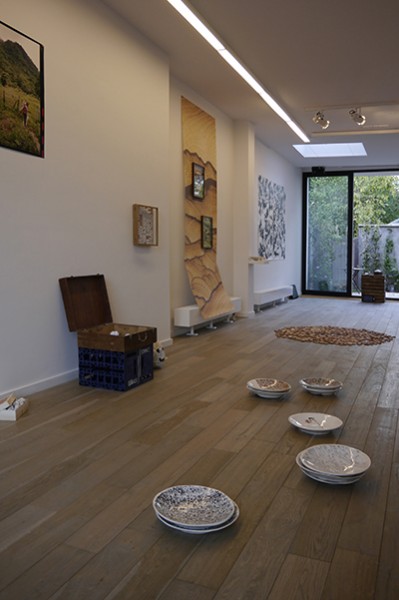
Charlotte Seidel, …, 2012 – 2016, book, impression, hand bookbinding, 25 x 18,5 x 7,5 cm, edition of 7 + 2 AP
Paula Castro, Embarcaciones indigenas sobre el lago, exposition internationale coloniale Paris 1931, 2011, ink on paper, frame, glass, 23 x 29 cm framed, unique piece
AFour Rhizome, Boules de dictionnaire, 2018, several materials, variable dimensions, unique pieces
Jenny Feal, Diario (Journal), 2016, clay, enamel, variable dimensions, unique pieces
Kihoon Jeong, The origin of chair, 2015, feet of a wooden chair, variables dimensions, unique piece
Louis-Cyprien Rials, Kanab, 2018, wallpaper, two oak frames, etching, postcard, anti reflective glass, variable dimensions,
edition of 5 + 2 AP
Louis-Cyprien Rials, Mene, Mene, Tekel, Upharsin – Bols, 2015, 3 ceramic bowls, black pigments, variable dimensions, unique pieces
Sun Choi, You Can Continue to Breathe at the Ending Point of My Breath, 2011, Japanese people’s breath, India ink on paper, variable dimensions, unique piece
Sun Choi, Interrupted voyage, 2018, ephemeral installation with sea salt from the sea of North Korea. Documentary video. Photo © Sun Choi
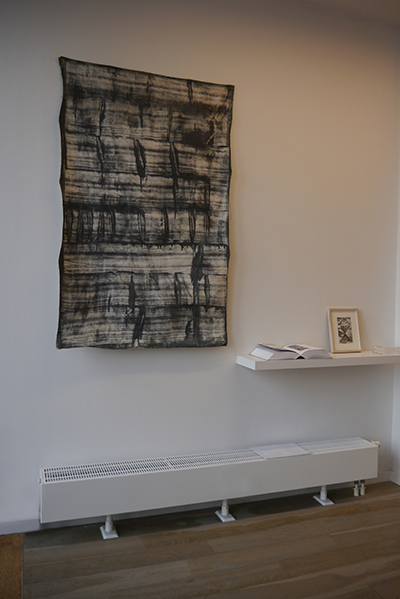
Sun Choi, Naked painting, 2015, canvas, 155 x 100 cm, unique piece
Charlotte Seidel, …, 2012 – 2016, book, impression, hand bookbinding, 25 x 18,5 x 7,5 cm, edition of 7 + 2 AP
Paula Castro, Embarcaciones indigenas sobre el lago, exposition internationale coloniale Paris 1931, 2011, ink on paper, frame, glass,
23 x 29 cm framed, unique piece. Photo © Sun Choi
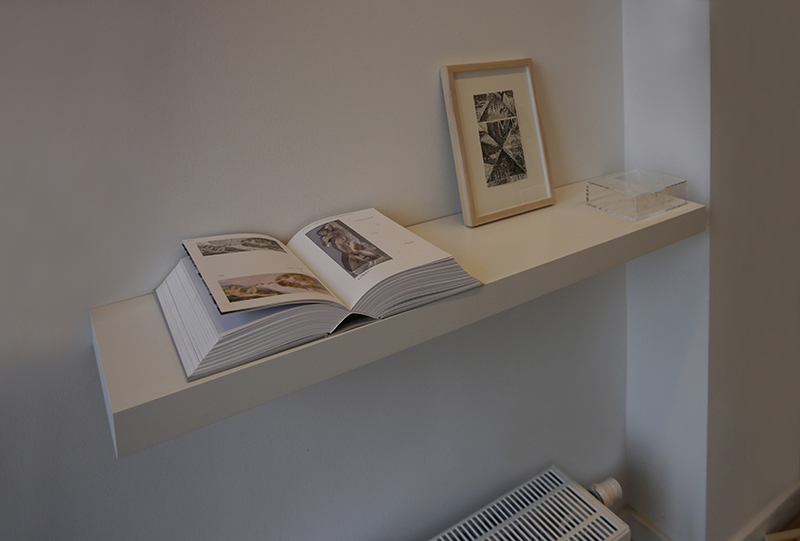
Charlotte Seidel, …, 2012 – 2016, book, impression, hand bookbinding, 25 x 18,5 x 7,5 cm, edition of 7 + 2 AP
Paula Castro, Embarcaciones indigenas sobre el lago, exposition internationale coloniale Paris 1931, 2011, ink on paper, frame, glass,
23 x 29 cm framed, unique piece
AFour Rhizome, Boules de dictionnaire, 2018, several materials, variable dimensions, unique pieces. Photo © Sun Choi
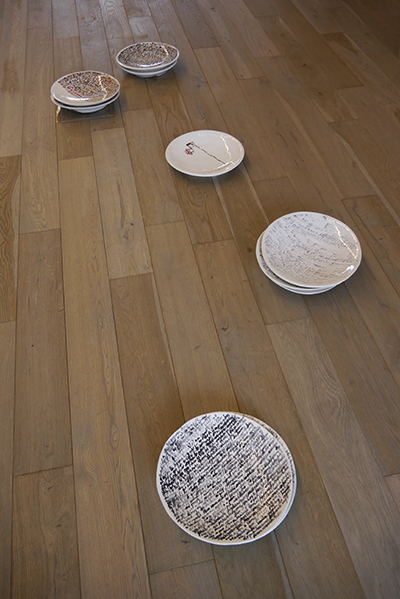
Jenny Feal, Diario (Journal), 2016, clay, enamel, variable dimensions, unique pieces. Photo © Sun Choi
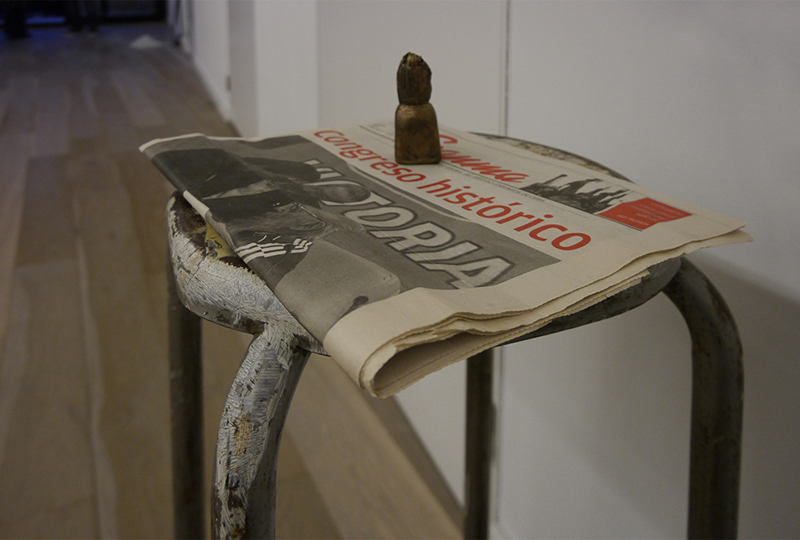
Jenny Feal, Córtate la barba (Coupe-toi la barbe), 2016, bronze, newspapers, steel, mirror, variable dimensions, unique pieces. Photo © Sun Choi
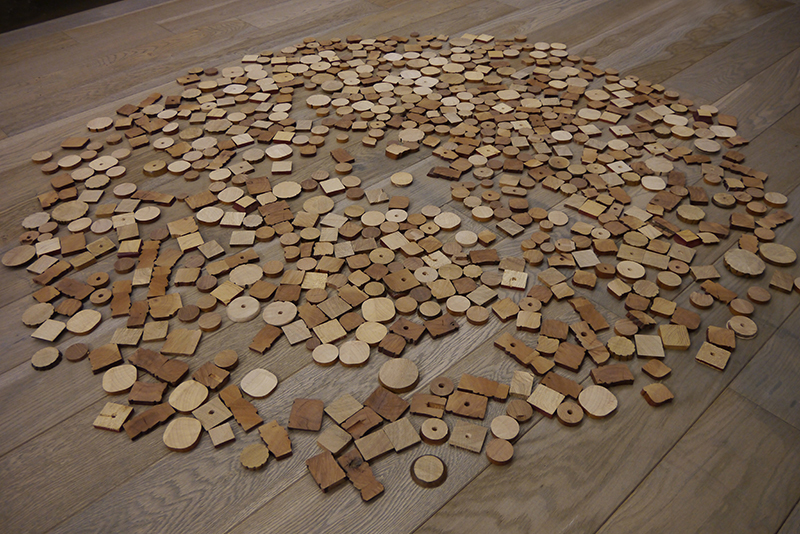
Kihoon Jeong, The origin of chair, 2015, feet of a wooden chair, variables dimensions, unique piece. Photo © Sun Choi
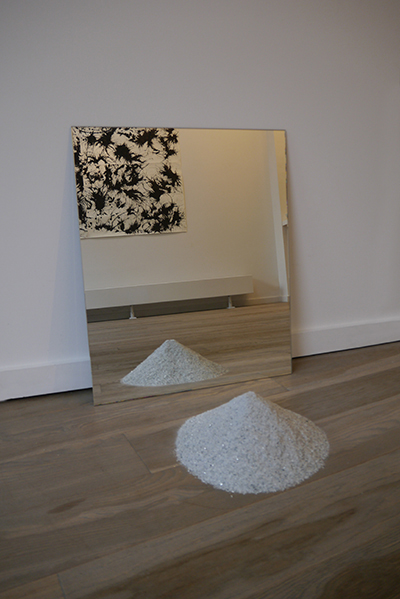
Kihoon Jeong, Time beyond the clock, 2015, mirror, powdered mirror, 60 x 50 cm, unique pieces. Photo © Sun Choi
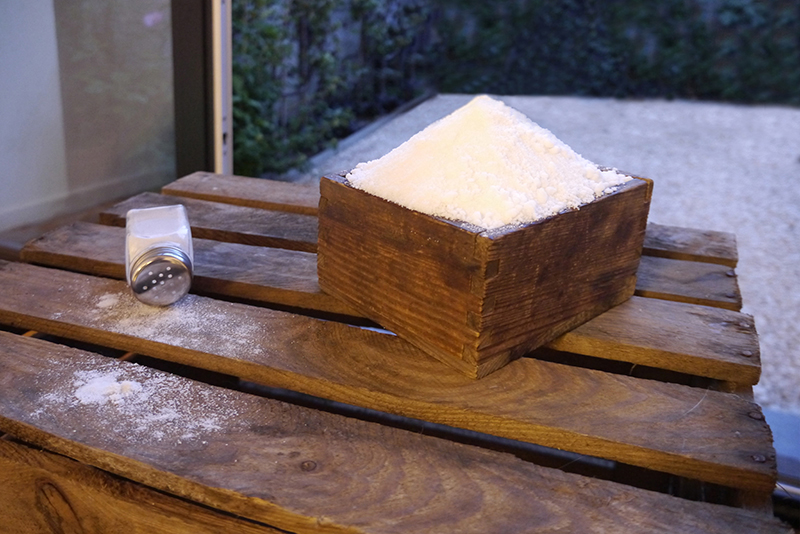
Sun Choi, Interrupted voyage, 2018, ephemeral installation with sea salt from the sea of North Korea. Documentary video. Photo © Sun Choi
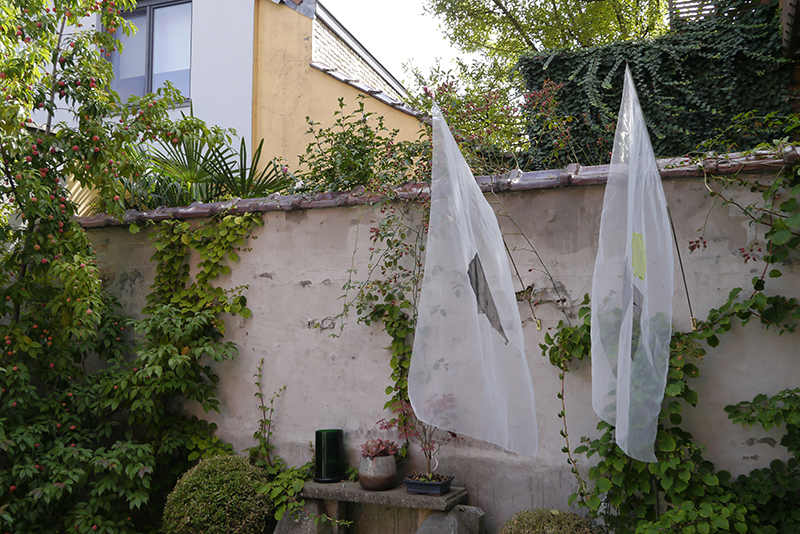
RohwaJeong, Three cornered, 2018, silk screen print on paper, 57 x 76 cm, unique piece. Acrylic on silk screen mesh, brass, variable dimensions, unique piece
5/4, 2018, silk screen print on paper, 57 x 76 cm, unique piece. Acrylic on silk screen mesh, brass, variable dimensions, unique piece. Photo © Sun Choi
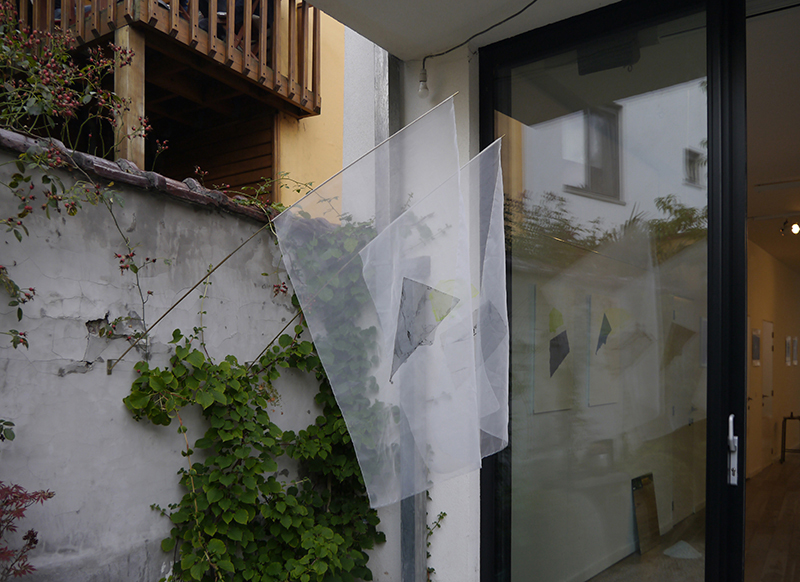
RohwaJeong, Three cornered, 2018, silk screen print on paper, 57 x 76 cm, unique piece. Acrylic on silk screen mesh, brass, variable dimensions, unique piece
5/4, 2018, silk screen print on paper, 57 x 76 cm, unique piece. Acrylic on silk screen mesh, brass, variable dimensions, unique piece. Photo © Sun Choi
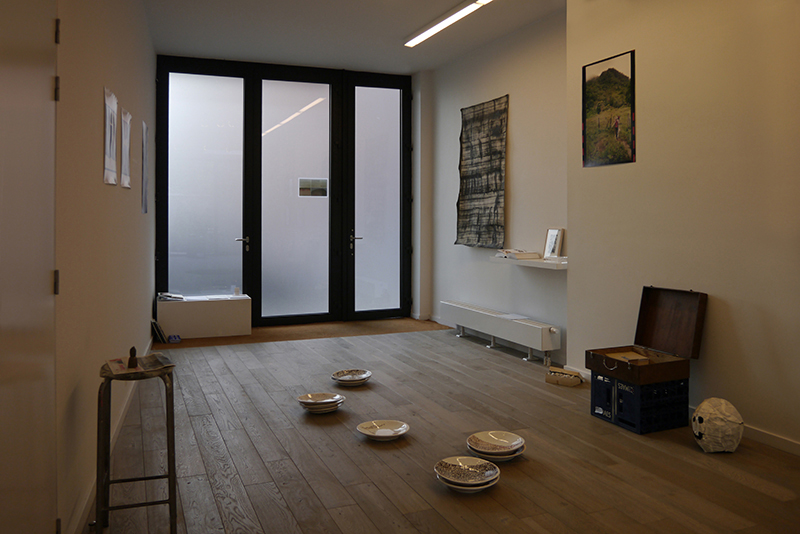
Jenny Feal, Córtate la barba (Coupe-toi la barbe), 2016, bronze, newspapers, steel, mirror, variable dimensions, unique pieces
Jenny Feal, Diario (Journal), 2016, clay, enamel, variable dimensions, unique pieces
AFour Rhizome, Boules de dictionnaire, 2018, several materials, variable dimensions, unique pieces
Marcos Avila Forero, Archive – Casa perdida 1, 2017, analog photography black and white on baryta paper, 50 x 60 cm, edition of 15 + 3 AP
Marcos Avila Forero, Archive – Casa perdida 2, 2017, analog photography black and white on baryta paper, 50 x 60 cm, edition of 15 + 3 AP
Marcos Avila Forero, Archive – El guia – Cesitar, 2017, digital color photography on baryta paper, 80 x 60 cm, edition of 15 + 3 AP
Marcos Avila Forero, Archive – Raspachin, 2017, digital color photography on baryta paper, 80 x 60 cm, edition of 15 + 3 AP
Paula Castro, Embarcaciones indigenas sobre el lago, exposition internationale coloniale Paris 1931, 2011, ink on paper, frame, glass,
23 x 29 cm framed, unique piece
Charlotte Seidel, …, 2012 – 2016, book, impression, hand bookbinding, 25 x 18,5 x 7,5 cm, edition of 7 + 2 AP
Sun Choi, Naked painting, 2015, canvas, 155 x 100 cm, unique piece. Photo © Sun Choi
………………………………………………..
![]()
73-75 rue Quincampoix 75003 Paris France
Tuesday – Saturday 11 am – 1 pm // 2 pm – 7 pm
tel : +33 (0)1 42 77 05 97
www.galeriedohyanglee.com
![]()
![]()
![]()
………………………………………………..

